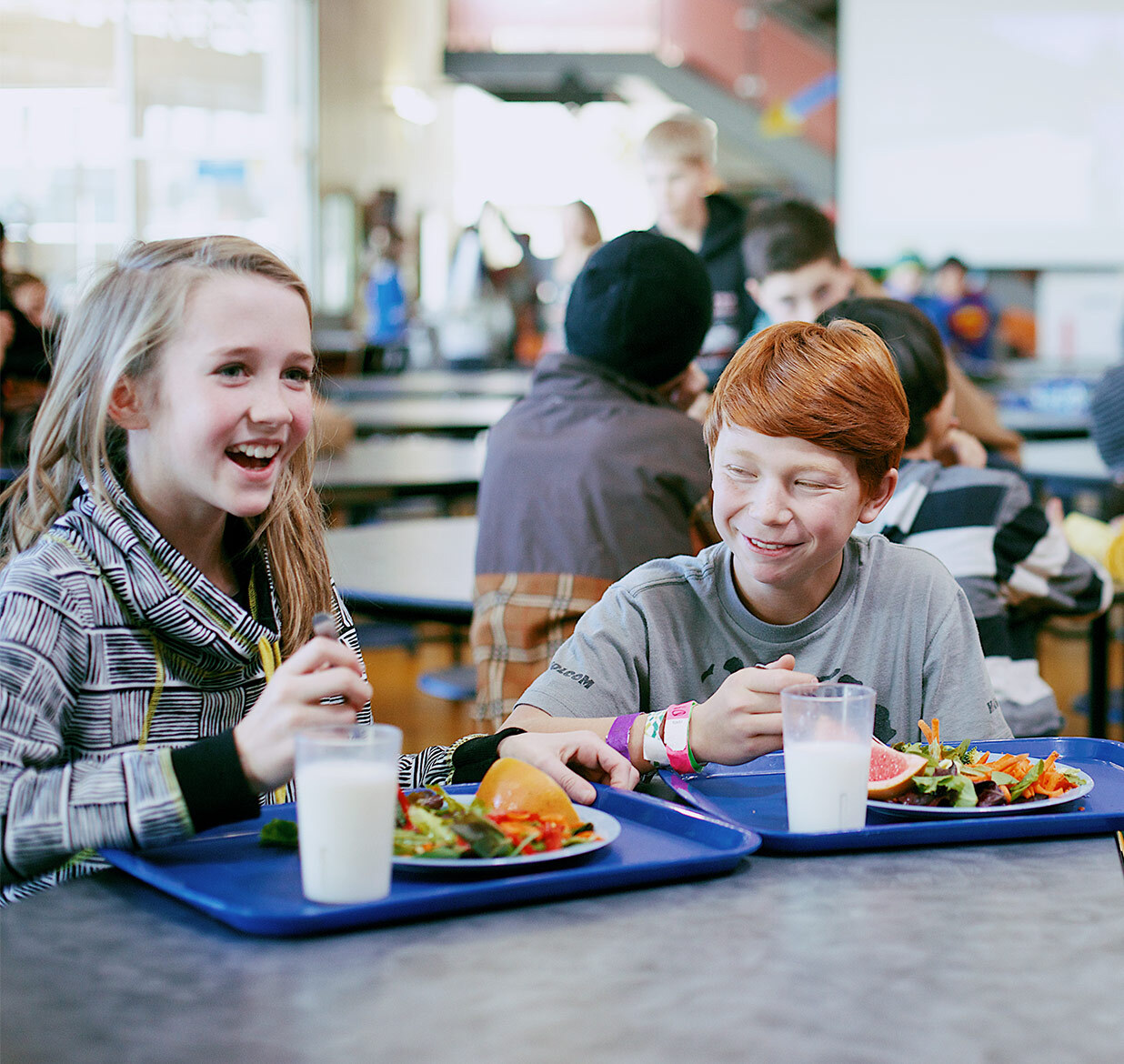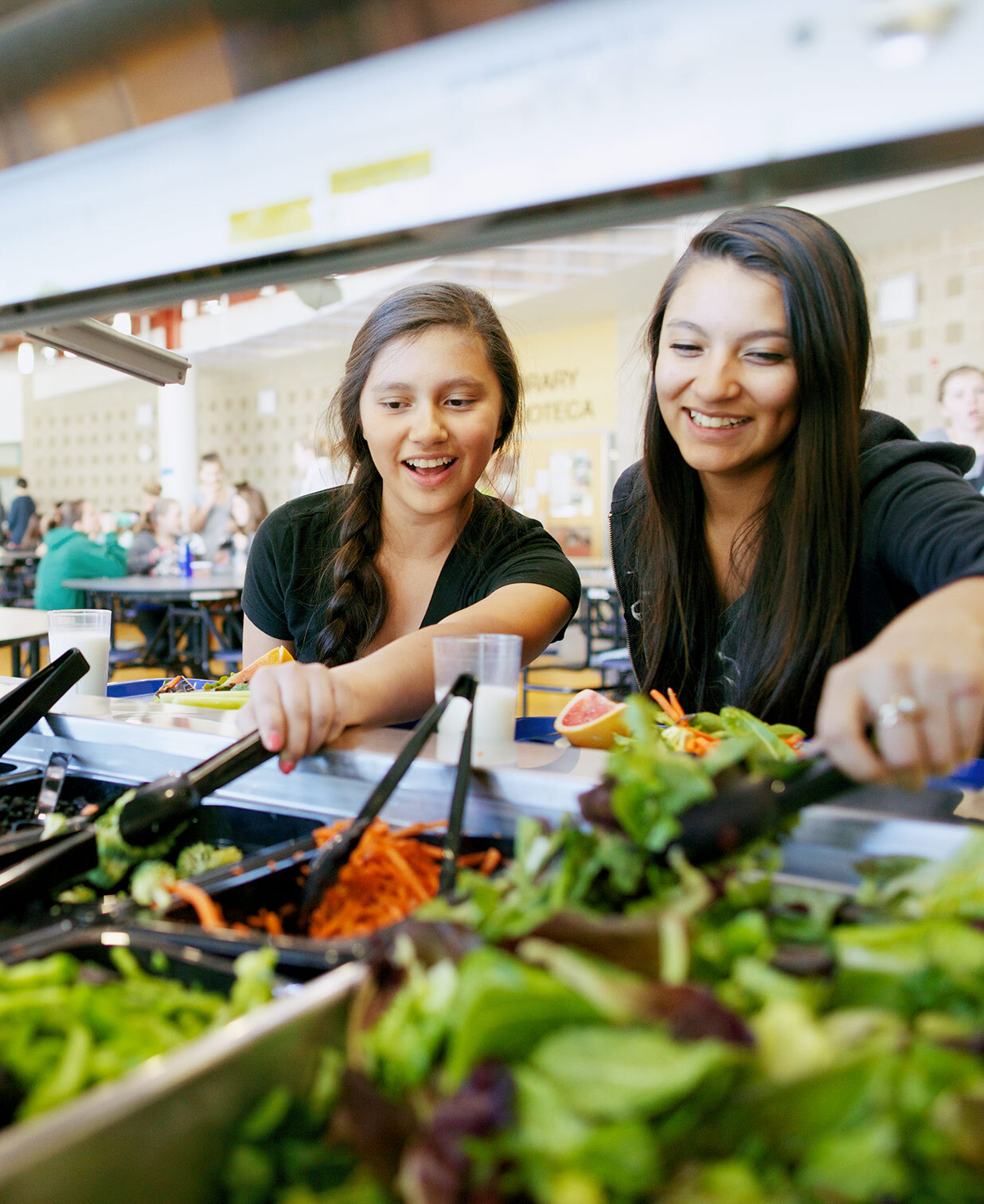
Training
Salad bars change the culture of school cafeterias and present a new opportunity for students to learn and engage with school meals. For school administration, principals, teachers, parents, and community, salad bars represent a tangible example of what “eating healthy” can look like. While salad bars are an exciting addition to the lunchroom, they can also bring trepidation. Including the school district community in the preparation and implementation process helps to ensure a smooth transition.

Training
Salad bars change the culture of school cafeterias and present a new opportunity for students to learn and engage with school meals. For school administration, principals, teachers, parents, and community, salad bars represent a tangible example of what “eating healthy” can look like. While salad bars are an exciting addition to the lunchroom, they can also bring trepidation. Including the school district community in the preparation and implementation process helps to ensure a smooth transition.
Staff Training
Staff training is crucial to salad bar success. To learn more about the specifics of training your staff, check out the SOPs, Training, & Support section in Salad Bars: Operations. Or train your staff in the management and preparation for salad bars using in the School Food Institute’s Salad Bar course.
District Preparedness
How to Engage Key District Stakeholders with Salad Bars
Salad bar success is inextricably tied to a district’s enthusiasm and approval. Salad bars can be complex additions to the menu and day-to-day organization of the “back-of-the-house.” They have an equally large impact on the school’s lunch periods.
As part of the planning process, it is important to inform the district of the exciting shift in your operation. Usually, salad bars receive positive reception from adults because they are a tangible sign of school food improvement. Administrators at the district level,school principals, teachers, school board, and parents can provide critical support for your program. Parents help tremendously by educating children about healthy eating habits, trying new foods, and supporting school lunch. School boards will see the positive results of increased participation and interest in nutrition that can foster a better educational environment.


District Preparedness
How to Engage Key District Stakeholders with Salad Bars
Salad bar success is inextricably tied to a district’s enthusiasm and approval. Salad bars can be complex additions to the menu and day-to-day organization of the “back-of-the-house.” They have an equally large impact on the school’s lunch periods.
As part of the planning process, it is important to inform the district of the exciting shift in your operation. Usually, salad bars receive positive reception from adults because they are a tangible sign of school food improvement. Administrators at the district level,school principals, teachers, school board, and parents can provide critical support for your program. Parents help tremendously by educating children about healthy eating habits, trying new foods, and supporting school lunch. School boards will see the positive results of increased participation and interest in nutrition that can foster a better educational environment.

Principals & School Teams
Once the food service director and team complete the initial work of planning and strategy, they can move on to informing principals at the designated schools about the program change to salad bars.
In many districts, food service sometimes seeks approval from the principal prior to launching a salad bar. We discourage this approach because systemically food service is responsible for managing all aspects of the meal program. While we recognize that principals take a lot of ownership of the school, it is extremely important to meet with the principals one-on-one to explore their concerns and seek their support, not to ask for their permission.
When principals see that the food service department is prepared and organized, they will almost always support change. Principals can support food service operational shifts by informing their teams (teachers, office staff, teaching assistants and maintenance staff) about the changes coming to their school site.

Principals & School Teams
Once the food service director and team complete the initial work of planning and strategy, they can move on to informing principals at the designated schools about the program change to salad bars.
In many districts, food service sometimes seeks approval from the principal prior to launching a salad bar. We discourage this approach because systemically food service is responsible for managing all aspects of the meal program. While we recognize that principals take a lot of ownership of the school, it is extremely important to meet with the principals one-on-one to explore their concerns and seek their support, not to ask for their permission.
When principals see that the food service department is prepared and organized, they will almost always support change. Principals can support food service operational shifts by informing their teams (teachers, office staff, teaching assistants and maintenance staff) about the changes coming to their school site.
Students
Engaging students with the new salad bar can be the most rewarding part of the whole process. While having more choices is exciting, some students may be overwhelmed. To help students ease in the experience, you should create clear guidelines for student participation from the beginning. We recommend preparing students by offering samples and educating them about salad bar etiquette. Lunchroom Education, such as Rainbow Days, are great ways to engage students in the salad bar.
Food safety concerns can derail a salad bar launch, but we know from thousands of successful operations across the country that salad bars can be completely clean and safe. Minimizing risk through student education is imperative. Students constantly touch many parts of the cafeteria, from the tables to the service line, and salad bars are no exception.
We often see hand sanitizing stations in school districts, but nothing is as effective as hand washing. Many school districts already have extensive educational campaigns to reinforce this important activity for general health. The following list represents the most common food safety practices that we focus on when educating students.
When the hotline doesn’t offer vegetable or fruit, students must understand that the salad bar is a required part of their meal. Use signs to illustrate and train students about portion size and choice, particularly for new students. Menu boards and visual aids on/near the salad bar are helpful reminders as the students are waiting in line. The Lunch Box provides Posters and Signs that are free for you to download.

Student Etiquette
- Always wash your hands before mealtime.
- The sneeze guard is there to keep your head away from the products.
- Ask an adult if you can’t reach.
- Alert staff as soon as a spill happens!
- Food should only be touched with clean utensils—not your fingers.
- If utensil falls on the floor, don’t put it back—tell an adult.
- Don’t taste food items while you are standing at the salad bar.
- Only take what you can eat. You can always come back for seconds.
- No coughing, spitting, or sneezing on the food or the salad bar equipment.
- Always use a clean plate/boat for seconds.
- Always be polite in line and wait your turn.
- Use the serving utensils to reach for something.

Student Etiquette
- Always wash your hands before mealtime.
- The sneeze guard is there to keep your head away from the products.
- Ask an adult if you can’t reach.
- Alert staff as soon as a spill happens!
- Food should only be touched with clean utensils—not your fingers.
- If utensil falls on the floor, don’t put it back—tell an adult.
- Don’t taste food items while you are standing at the salad bar.
- Only take what you can eat. You can always come back for seconds.
- No coughing, spitting, or sneezing on the food or the salad bar equipment.
- Always use a clean plate/boat for seconds.
- Always be polite in line and wait your turn.
- Use the serving utensils to reach for something.
Recommended Next Topic: Marketing Your Salad Bar
Marketing supports the long-term success of your salad bar implementation by educating students, showcasing the program to principals and teachers, and reaching out to parents and community members to support this exciting addition.
Recommended Next Topic: Marketing Your Salad Bar
Marketing supports the long-term success of your salad bar implementation by educating students, showcasing the program to principals and teachers, and reaching out to parents and community members to support this exciting addition.






